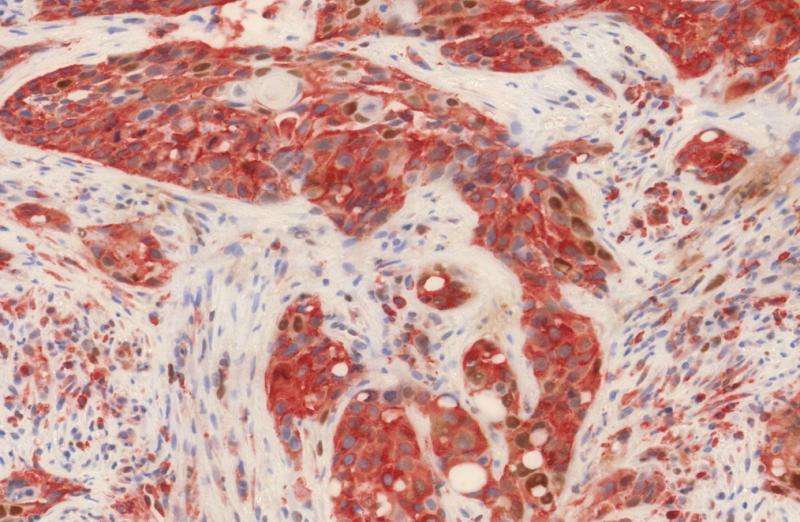Scientists find new tumor markers for the prognosis of head and neck cancer

Head and neck cancers include a heterogeneous group of tumours located in the oral cavity, pharynx and larynx. Despite therapeutic progress, the survival rate of patients with this pathology has hardly improved in the last decade. Many researchers are focusing on understanding the molecular biology of these tumours to improve their prognosis and treatment.
"One problem is the stratification of patients, which in many cases is limited to a clinical classification, not a molecular one", argue Susana Llanos and Juana M. García-Pedrero, authors of the study from the Tumour Suppression Group of the Spanish National Cancer Research Centre (CNIO) and from the Central University Hospital of Asturias (HUCA), respectively.
These researchers have analysed more than 270 biopsies of patients with head and neck cancers, and have found that about half of them show high levels of the p21 protein as well as mTOR activation. This research project, directed by Manuel Serrano, head of the Tumour Suppression Group and director of the CNIO's Molecular Oncology Programme, has found that the presence of p21 is closely linked to the activity of mTOR and that both markers predict a less aggressive evolution of the disease. In the future, patient classificatioin based on these markers could allow to choose the best therapeutic option for each group. The conclusions are being published this week in the journal Nature Communications.
The researchers have also unravelled the molecular mechanism by which p21 levels are linked to the activity of mTOR. In particular, when the mTOR protein is inactive, it dictates the degradation of p21, and, conversely, when mTOR is active, p21 becomes stable.
More information: Susana Llanos et al. Stabilization of p21 by mTORC1/4E-BP1 predicts clinical outcome of head and neck cancers, Nature Communications (2016). DOI: 10.1038/ncomms10438













